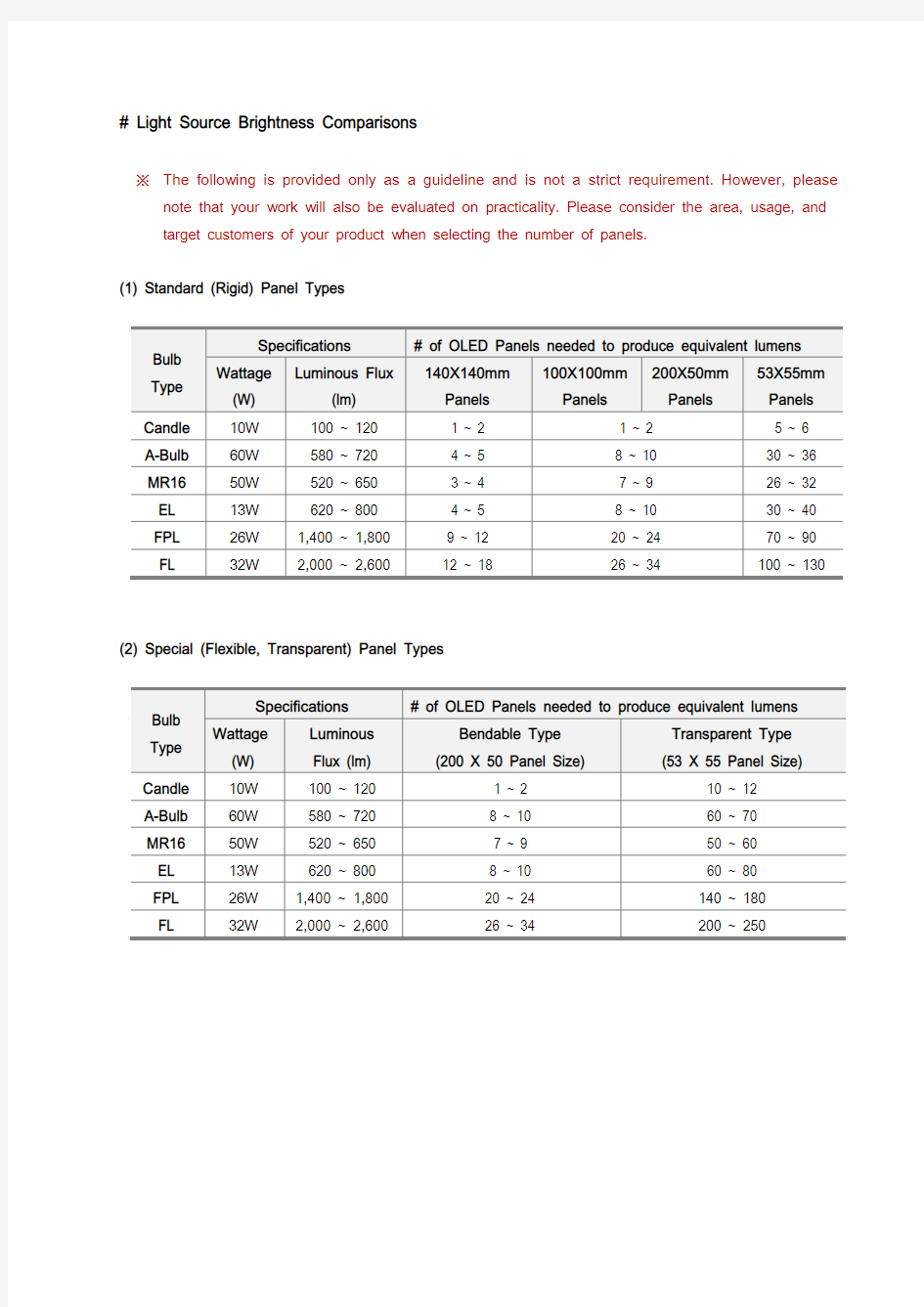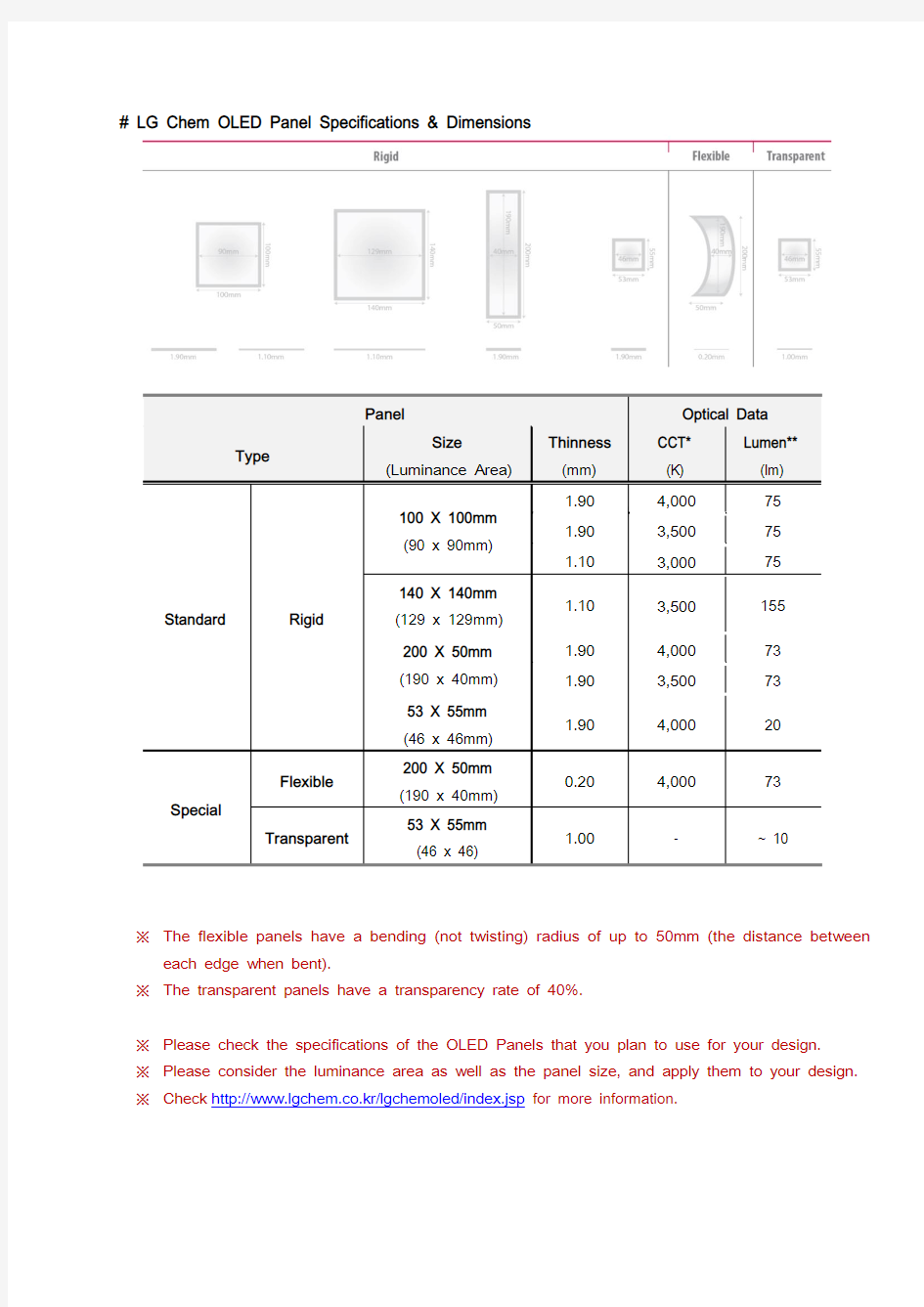OLED-Lighting-Light-Source-Brightness-Comparison_LG-Chem-OLED-Panel-Specifications-Dimensions (1)


# Light Source Brightness Comparisons
※The following is provided only as a guideline and is not a strict requirement. However, please note that your work will also be evaluated on practicality. Please consider the area, usage, and target customers of your product when selecting the number of panels.
(1) Standard (Rigid) Panel Types
(2) Special (Flexible, Transparent) Panel Types
# LG Chem OLED Panel Specifications & Dimensions
1.90 4,000 75
※The flexible panels have a bending (not twisting) radius of up to 50mm (the distance between each edge when bent).
※The transparent panels have a transparency rate of 40%.
※Please check the specifications of the OLED Panels that you plan to use for your design.
※Please consider the luminance area as well as the panel size, and apply them to your design. ※Check http://www.lgchem.co.kr/lgchemoled/index.jsp for more information.
# Lighting Terminology
* Lumen (luminous flux, lm) : A measurement of light emitted by a lamp.
As reference, 60-watt incandescent lamp emits about 720 lumens.
** CCT (Correlated Color Temperature, k) : The color of the light source.
By convention, yellow-red colors (like the flames of a fire) are considered warm, and blue-green colors (like light from an overcast sky) are considered cool.
Color temperature is measured in Kelvin (K) temperature.
Higher Kelvin temperatures (3600–5500 K) are considered cool and lower color temperatures (2700–3000 K) are considered warm.
